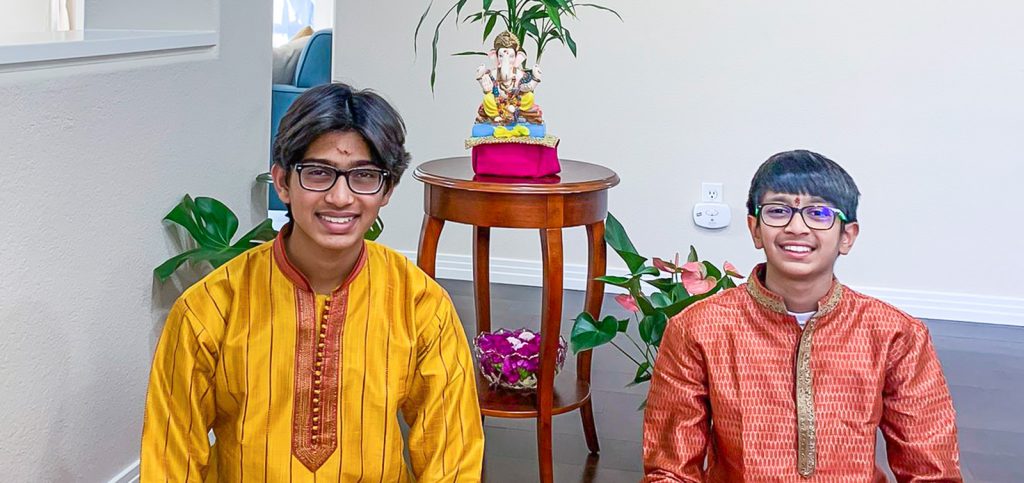Learning classical tunes with soulful gurus in person taught me what bhakti really means
By Surya Ambatipudi
The first time i walked into the warm, carpeted home of my music teacher, I didn’t expect much. I was a restless, impatient first-grader who was told that if I sat for an hour and sang, I would get a white chocolate chip cookie. At the time, I didn’t understand that I was making a lifelong commitment to an ancient art and an integral aspect of my Hindu culture. I didn’t realize that everything I learned in the next few years would stick with me for the rest of my life.
I started under my guru, Smt. Sankari Senthilkumar, who teaches from her home in Los Angeles. Her class environment ensured that no time was wasted, and that something new was learned every week. We were instructed to always keep our backs straight, voices crisp and books out. Soon I began learning geetas (shorter, structured pieces) and varnams (longer, structured pieces). I had my first rehearsal at age eight, followed by first individual performance at twelve. I then switched from group classes to individual. After moving to San Diego I pursued advanced kritis (nuanced compositions), under guru Sri. Subbu Iyer. As the years passed, Carnatic music ceased to be just a side hobby. It started becoming a part of my daily life, and my identity as a whole.
Understanding intricate pieces and being able to perform them was a small portion of what I learned. Learning compositions by masterful composers such as Sri Thyagaraja and Sri Dikshitar has given me an insight into what bhakti or, in simple terms, devotion really means. I recall one time I was sitting down for a class. By now, I had become used to the routine. Keep my back straight, open up the Google Drive folder with the lyrics to the song of the day, and get ready to sing. The class went on as usual, with my guru teaching and myself repeating whatever notes came out of his mouth.
He stopped after a while and told me there needed to be “more emotion” in my voice. I shrugged it off and tried some nuances in my notes, only to sing the same dry melodies as I had before. I then realized that emotion can’t be forced, especially in Carnatic music. I had to be completely in tune with the lyrics and engrossed in the image of God, for the song to sound genuine.
Carnatic music fosters bhakti as an art and practice. The intricacies of each piece are wrapped in a tapestry of soulful meanings. Sri Thyagaraja, for example, often asks to see Lord Rama’s presence, through a dramatic array of devotional words. I started paying attention to the meanings of certain kritis. I noticed beautiful combinations of phrases that described Deities in all Their splendor, followed by magnificent poetry signifying a sense of longing to be blessed by Them. This allowed me to imagine each song being a prayer to God. And so, the music has given me increased devotion and appreciation for my faith. It has made me proud of the talent that composers had in portraying their devotion, and I feel a sense of newfound reverence for their work.
My gurus inspired this devotion in me. They told me the meanings, details and stories behind each composition. They shaped me as a student and person. It’s given me an understanding of guru-shishya parampara, or the cultural tradition of knowledge passed down from teacher to student. Unlike many self-learn school subjects, sports and hobbies, Carnatic music, in my opinion, must be taught by a guru.
Such a valuable music tradition has kept me grounded. It is a humbling experience, because you can never be perfect. Each retake of a kriti opens up a new array of improvements to be made. The complexities of this art ensure that one stays humble, and never begins to think that they have learned “enough” or are at the level of their guru.
Surya Ambatipudi, 16, is a high schooler living in California who is inspired to write about his experiences as a Hindu in America.
